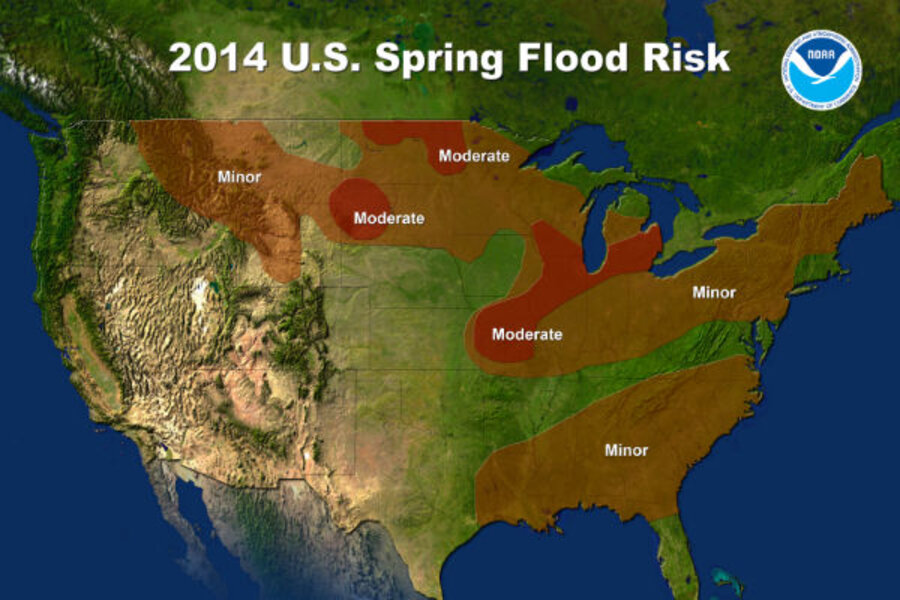NOAA Spring Outlook: Floods for some, but drought could spread
Loading...
The winter that keeps on giving could fuel flood conditions this spring in much of the Midwest, Great Lakes, and New England, say federal meteorologists.
As the remaining snowpack begins to melt, it may not have many drainage paths because of deep layers of frozen ground and thick ice jams on rivers and streams, officials from the National Oceanic and Atmospheric Administration (NOAA) said in a teleconference with reporters Thursday.
All that extra water could overwhelm rivers and streams in half of the continental United States, NOAA’s annual Spring Outlook report cautions.
“Rivers in half of the continental United States are at risk of exceeding minor or moderate river flood levels this spring,” explained Robert Hartman, acting director of NOAA's Office of Hydrologic Development.
NOAA’s predictions are primarily based on the existing snowpack, ice accumulation, depth of frozen ground, and relatively short-term weather forecasts. Heavy rain events could exacerbate flood conditions.
“Unfortunately, for precipitation, climate signals were very weak and unreliable,” Mr. Hartman said. “That is often the case during spring but especially this year.”
Floods not only pose major economic threats to homes and businesses, but also to human life.
“Flooding is the leading cause of severe-weather-related deaths [in the United States], claiming, on average, more than 100 lives per year,” Hartman cautioned.
“Half of these flood-related deaths occur in motor vehicles,” he added. “Please take NOAA’s advice to ‘Turn around, don’t drown.’ Water can be deceptively deep and the underlying roadway can be washed away,” he said.
The flood risk in the middle and eastern portions of the country is in stark contrast to the drought that has gripped – and likely will continue to plague – much of the West and Southwest.
While portions of Washington, Idaho, Oregon, Nebraska, and the Midwest could experience some relief this spring, drought conditions in Arizona, New Mexico, and West Texas could spread to previously unaffected areas, said Jon Gottschalack, acting chief of the Operational Prediction Branch of NOAA’s Climate Prediction Center.
"If the drought persists as predicted in the West and Southwest, it will likely result in an active wildfire season and continue to stress crops and livestock, due to low water levels,” Mr. Gottschalack said.
Over the next three months, areas ranging eastward from Western Montana across the Northern Plains to the Great Lakes Region can expect temperatures below normal, while parts of the Northwest, California, Nevada, the desert Southwest, Southern Plains, and the Southeast likely will feel warmer than usual.
NOAA issued an advisory earlier this month that conditions appeared favorable for the development of an El Niño event later this summer or early fall. Such an event could exacerbate drought conditions in parts of Arizona and New Mexico.








